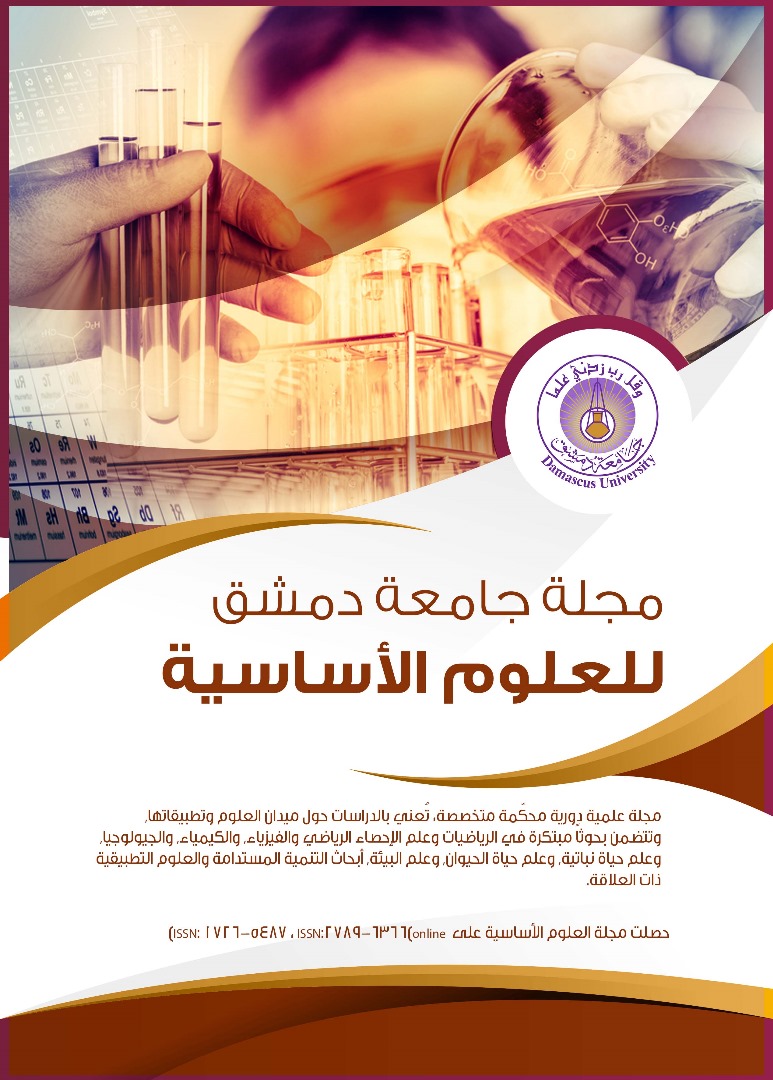Toxicological Effects of TCDD on Intergenerational Fertility in Female BALB/c Mice: Genetic, Hormonal and Histological determinants in the Ovary
Keywords:
TCDD , Ovary, Gene Expression, Estradiol , GenerationsAbstract
Dioxins are among the widespread persistent organic pollutants in the environment, which negatively affect the formation of female gametes in mammals. 2,3,7,8-Tetrachlorodibenzo-p-dioxin (TCDD) is one of the most toxic congeners of dioxins due to its high accumulation in adipose tissue. Investigating of the toxicological effects of dioxins on mammalian fertility is a topic of great importance. In light of the wide spread of these compounds in the Syrian environment and the limited number of studies that clarify the molecular mechanisms, the pathways, and the hormonal and histological changes resulting from the exposure to dioxins, which occur within the female gonad cells and the accompanying effect on the fertility of female generations, the aim of this research is to investigate the toxicological effects of TCDD in female mice of the two generations (F1, F2) exposed indirectly, as a result of gestational exposure of their mothers to TCDD (F0). This implies the evaluation of gene expression of the most important genes responsible for the response to dioxins in ovarian cells, using real-time quantitative polymerase chain reaction (RT-qPCR). In addition, the hormonal changes of estradiol were performed by immunological essay. Moreover, the histological changes in the ovaries of F1 and F2 generations was determined. In this study, mice mothers on the eighth day of their pregnancy was exposed to a single oral dose of TCDD of 50 mcg/kg. Mother mice were kept in standard conditions to obtain two generations (F1, F2). The results showed that there were differences in the gene expression of TCDD-exposed ovarian, according to generations, where we found an increase in the expression of CYP11A1 in F1 females and a decrease in its expression in F2 females. While a decrease in the expression of 3βHSD 2 gene was detected in both generations (F1, F2), as well as a higher expression of CYP19A1 gene was observed in females of both generations (F1, F2) compared to the control groups. This was hormonally related to a net raise in the level of estradiol in (F1, F2) of the experimental group, while histologically, several changes were observed, the most important of which were atrophy in the size of the ovary in females of the F2 generation, and the occurrence of necrosis in the layer of granular cells and the dissolution of the oocyte and the nucleus of the ovarian follicles in females. In addition, both generations F1 and F2 showed the presence of congestion in the blood vessels and the appearance of cancer cells in the females of F1 generation of the experimental groups. The male\female ratio of F2 and the fertility of the two generations (F1, F2) also decreased. As a conclusion, our study shows that TCDD causes a dramatic change in the gene expression in the ovary of the exposed generations indirectly. In particular a high expression of CYP19A1 which is associated with elevation of the hormone estradiol and the formation of cancer cells in tissue samples can be a biomarker of ovarian cancer, thus suggesting an impact on the synthesis of steroid hormones, which ultimately leads to disturbances in the fertility of generations of female mice.

